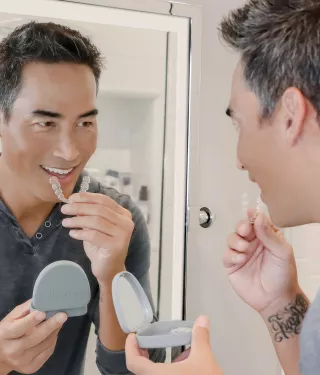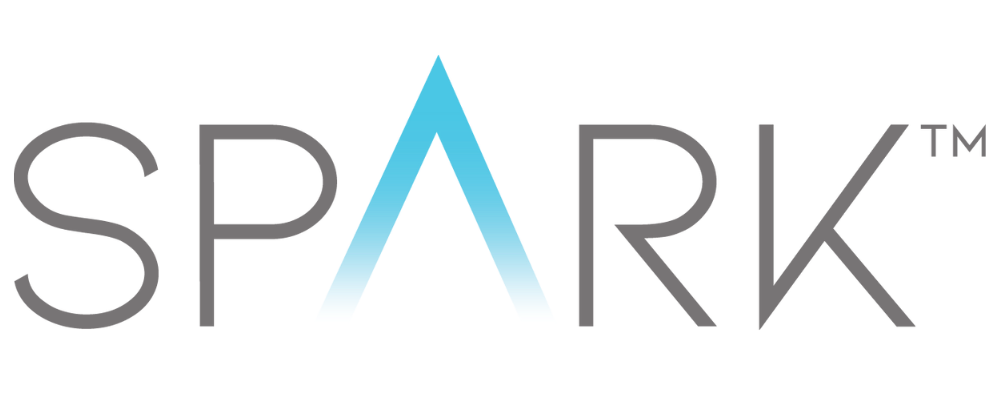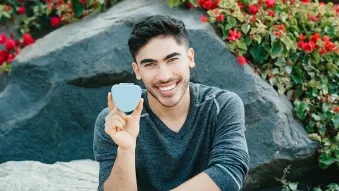The Science Behind Spark: Get Straight Teeth Without Braces

Q&A with Dr. Jeff Heinz*
Today we are excited to speak with Dr. Jeff Heinz of Spillane and Reynolds Orthodontics in Novi, Michigan about his experience treating patients with Spark. We will discuss some key components and features of Spark Aligners that make treatment, comfort, and patient satisfaction a big consideration point for anyone who may be considering treatment with clear aligners.
Q: Thanks again for taking the time to meet with us Dr. Heinz. If you could just tell our readers a little bit about your background and expertise:
A: Sure thing, my name is Dr. Jeff Heinz and I practice in Novi, Michigan, as well as Rockford, Michigan. I have treated roughly 1,000 aligner cases to date, of which 200 have been with Spark aligners.
Q: Can you speak in some detail about how aligners work and more specifically how the Spark Clear Aligner System works as well?
A: Yes, aligners have really been a disruptive technology in the field of orthodontics. When Invisalign created the first aligners back in the early 2000s, they were extremely primitive. You could do limited tooth movement with them, but nothing that involved complex tooth movements. The general idea is that the aligners fit over your teeth and each aligner is slightly differently shaped to move each tooth a little bit more towards an ideal position. So, as you go through 10, 20, 30 …50 trays, your teeth move slowly, but steadily move towards that ideal position. In an ideal world, you have an orthodontist, directing how those teeth are moving, in what order, with what kind of forces and at what speed. Over the past 20 years, Invisalign has been making improvements in this technology and was the main company driving the innovations in this space.
But, as the space has grown, more and more people were interested in aligner treatment, and other companies started to pursue aligner technologies of their own. Our practices, having worked with Ormco and the Damon Braces System for so long, were approached by Ormco, in December of 2018, to help them develop and test the Spark aligner system they were so excited about. We were excited, too!
Ormco has always treated us well and produced nothing but top-notch technology for the past, you know, 60 years. So why wouldn't we want to be part of their new aligner system? So, we started using Spark in December of 2018. When we first brought Spark into our practice approximately 30-40% of our cases were treated with Invisalign aligners (depending on the patient cases and preferences), and now we are trending towards 50% aligners because we love Spark so much. At first, we kind of put one toe into the water, instead of jumping all the way in, because we didn't know how Spark would perform. What we quickly found was that our patients loved Spark, and our results are better than ever. After seeing those first patients come back and seeing how Spark was working, we decided to be all in with Spark. That's when we really started ramping up our Spark cases. Throughout the past two years, we've really fallen in love with the product, not only from a clinical standpoint, but also just from a patient care standpoint. One of the major things that we like is they're significantly more clear than Invisalign’s aligners. When you look at the materials next to each other, and you hand them to your patients, it’s easy for them to see that the Spark material has better esthetics.
Q: Is there anything that typically patients notice about Spark that stands out?
A: There are a few things that stand out to people when we first tell them about their two options for aligners. The first thing patients pick up on is the difference in clarity, with Spark being clearer.
Secondly, when handling the two aligners, most notice the difference in smoothness of the edges of the aligners. Spark’s hand polished edges stand apart from the competition.
Lastly, and one of the more surprising findings, was one I wasn’t aware of until one of the product designers mentioned it sometime after we had been using them. He told me that they’re stain resistant. I thought about it for a while and realized that I had never had a patient come back with a gross looking aligner. No matter if they drank or ate with them in (against our recommendations, of course), or left them on too long without changing them. They always looked good. The stain resistance really showed when we went through the COVID-19 shut down. A lot of our patients weren't able to get their next sets of aligners during the shutdown, so they had to stay in their previous aligners. Fast-forward three months later to when we were finally able to see our patients again, and their trays looked brand new! It was kind of mind blowing for us. Especially when we compare them side-by-side to the competitor’s material, which looked pretty stained after that same time period. So those three things were huge difference makers for us. I think people like having options, and if they want to choose Invisalign, they can, and we're going to give them wonderful results. But if they want to choose something that's a little bit more clear, a little bit more comfortable and is stain resistant, then they go with Spark, and the vast majority of our patients go that route.
We never try to push a product. Rather, we give everyone the option of Spark or Invisalign and let him or her choose on his or her own. When patients do a side-by-side comparison, I can tell you that 95% of them choose Spark, and we are not trying to coerce that decision. I feel very comfortable treating with either option, and know we can get wonderful results with either Invisalign or Spark, so I let them make the choice.
Q: Have you noticed any changes in volume with the amount of aligner cases you are now doing or changes in the types of cases you are now able to treat using Spark Aligners?
A: We've been extremely happy with the results that we're getting. Every day we're pushing the envelope with what types of cases we treat with aligners and are treating more patients that we originally would have reserved only for braces. I've been pleasantly surprised with what we are able to accomplish. We’re treating everything from severe crowding, and large overbites to gummy smile cases and open bites. I would say we can now treat 90% of the cases in aligners that we can with braces, and I think that number grows every day. We are getting closer and closer to being able to treat all cases with aligners, as long as the treatment is performed by the right orthodontist.
Q: Are there any case types that you would actually say Spark aligners have an advantage in treating?
A: Sure, but I feel like the major advantage we’re seeing now is getting the same end results whether the case is treated with aligners or braces. We also feel like there is an advantage in treating open bite cases with aligners. Those are cases where someone can't bring their front teeth together, and aligners typically perform really well in those instances. In open bite cases, a patient’s back teeth come together but their front teeth don’t. Our goals in treating those cases are to push the back teeth back in and bring the front teeth together. With aligners, when you're biting on the thickness of plastic on those back teeth, it can help push those back teeth in a little bit and then bring the front teeth together. If you don't want to let those back teeth move down at all, to close the bite more, we can just program that into the software to control that vertical dimension much easier than with braces. Some other cases that are a little bit easier to treat with aligners than braces can be really minor cases. With braces, you have to sort of take everything apart and then put it back together, which can sometimes take a little more time. With aligners, if I only want to move a couple teeth, or only want to move a limited set of teeth, I can program that into the computer, move them digitally and individually, and leave the other teeth exactly where they are. This allows us to shorten treatment times for limited cases for people that just need a little bit of help.
Q: One of the things we’ve heard from talking with a few doctors now is that Spark can sometimes lead to faster treatment times and faster results. Would you agree with that and is there anything particular about the design that leads to this?
A: We’ve seen some very short treatment times with Spark aligners. Part of that could be that we are getting better with our treatment mechanics and techniques, but some of that could also be due to the Spark TruGen material. There have been some preliminary studies that have shown the TruGen material to have a greater sustained force retention compared to the leading aligner company, which could lead to faster treatment times.
Q: One quick question just going back to the gummy smiles, crowding, and overbites and now getting those same results that you would have with braces, are you getting those results with aligners in the same timeframe that you would with braces?
A: We are - that is correct. Treatment times are very, very similar. Now, it's more often that treatment times are related to the patient's compliance and if they're wearing the aligners the recommended 22 hours a day as well as wearing their elastics the way they should. I would say treatment times are more patient compliance related versus appliance related now a days. But if all things are equal and patients are compliant, we typically see the same amount of time for aligners that we do for braces.
Q: Are there any comfort advantages with Spark aligner that you see patients experience when compared to other alternatives?
A: The biggest thing, in my mind, when it comes to comfort is the polished edges. This provides the patient with a significantly smoother surface that comes into contact with your gums and the inside of your cheeks. We've had patients that have switched from Invisalign to Spark and have mentioned how happy they are with how much smoother and more comfortable they are.
Q: That’s great to know. Lastly, is there anything else you think would be helpful for patients who are looking to start aligner treatment should know about Spark?
A: If you were to ask our practice team members what they would want to be treated with, every one of them would choose Spark. Of our current team, all of them who are getting clear aligner treatment are being treated with Spark. I think that speaks volumes to how wonderful the product is because our team sees patient results and experience across all treatment options so for them to unanimously choose Spark for their own treatment is huge.



